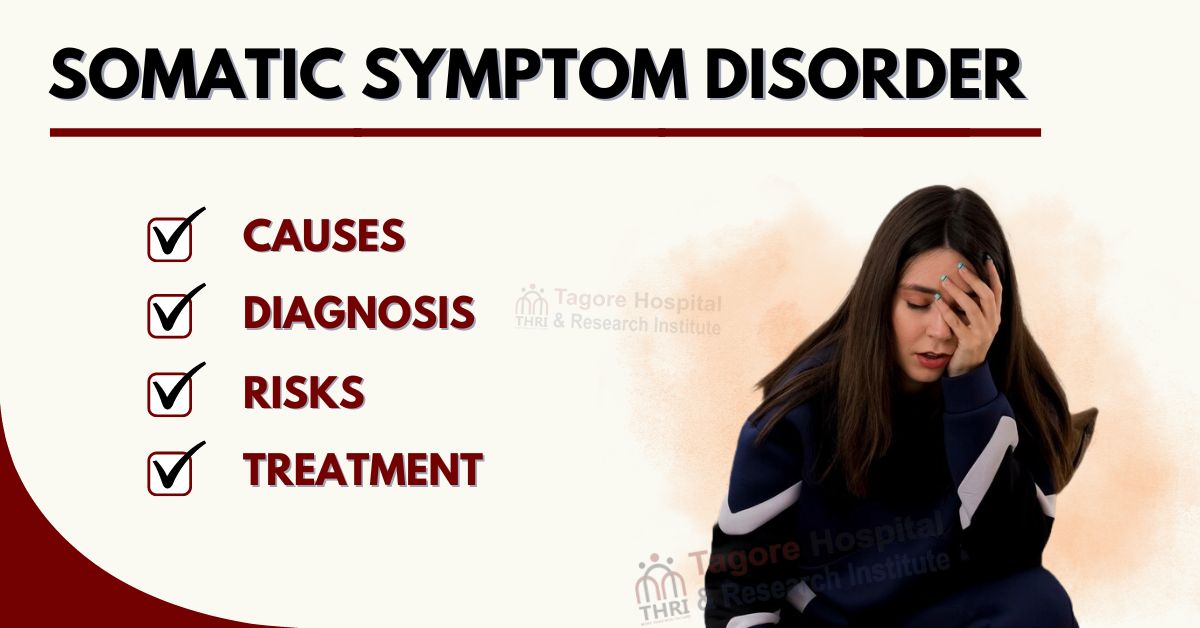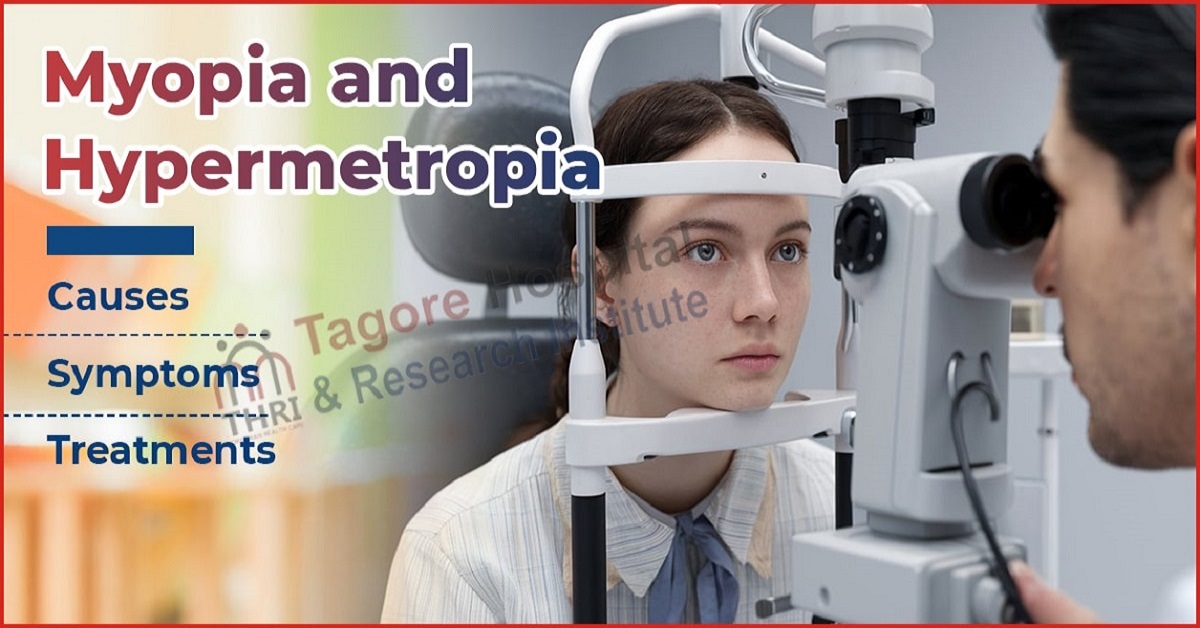- By Tagore Admin
- Posted October 12, 2024
What is Somatic Symptom Disorder?
Somatic Symptom Disorder (SSD) is a mental health condition characterized by the presence of persistent, distressing physical symptoms that cannot be fully explained by a known medical condition. Individuals with SSD often experience excessive worry, anxiety, and preoccupation with their physical health, leading to significant distress and impairment in daily functioning.
Unlike other medical or mental health disorders, where symptoms have clear physiological or psychological explanations, SSD involves symptoms that lack a consistent and comprehensive medical explanation. This disorder is diagnosed when the distressing symptoms, along with the individual's thoughts, feelings, and behaviours related to those symptoms, significantly disrupt their daily life.
It's important to note that individuals with Somatic Symptom Disorder are not intentionally feigning or exaggerating their symptoms. The distress they experience is real, but the focus on physical symptoms goes beyond what is considered typical or medically justifiable.
Treatment often involves a combination of psychotherapy, education, and, in some cases, medication to address related emotional distress. A collaborative approach involving mental health professionals and healthcare providers is crucial in managing Somatic Symptom Disorder effectively.
What are the symptoms of Somatic Symptom Disorder?
The symptoms of Somatic Symptom Disorder (SSD) can vary widely, but they generally involve persistent, distressing physical complaints. Here are the key features of SSD:
- Persistent Physical Symptoms: Individuals experience ongoing, bothersome physical symptoms, which can include pain, gastrointestinal issues, neurological symptoms, or other bodily discomforts.
- Excessive Concern: There is an excessive and disproportionate level of concern, anxiety, or preoccupation with the seriousness of the symptoms, often leading to frequent medical consultations or extensive medical testing.
- Disproportionate Distress: The distress and disruption caused by the symptoms are disproportionate to the actual medical findings. Even if there is a medical condition, the person's reaction is more intense than expected.
- Impaired Daily Functioning: The preoccupation with physical symptoms significantly impairs daily functioning, affecting work, social relationships, and other aspects of life.
- Duration: The symptoms persist for an extended period, typically over several months.
Causes of Somatic Symptom Disorder
The exact causes of Somatic Symptom Disorder (SSD) are not fully understood, and a combination of biological, psychological, and social factors likely contribute to the development of this condition. Some potential factors include:
- Biological Factors: There may be a genetic or biological predisposition that makes some individuals more vulnerable to developing somatic symptom disorders. Changes in neurotransmitter activity or alterations in the way the brain processes pain signals could also play a role.
- Psychological Factors: Past experiences, such as trauma or a history of illness, may contribute to the development of SSD. Additionally, personality traits, such as a tendency to worry excessively or a heightened sensitivity to physical sensations, could be involved.
- Cognitive Factors: Maladaptive thought patterns, such as catastrophic thinking about physical symptoms, can contribute to the development and maintenance of SSD. These thought patterns may amplify the perceived severity of symptoms.
- Learned Behavior: Reinforcement of seeking attention or receiving care in response to physical symptoms may contribute to the persistence of the disorder. If individuals consistently receive attention or support when they express physical distress, it can reinforce the behaviour.
- Stress and Life Events: High levels of stress or significant life events, such as a major illness or loss, can trigger or exacerbate symptoms of somatic symptom disorder. Stress may also contribute to an increased focus on physical sensations.
- Cultural and Social Factors: Societal and cultural factors can influence the way individuals express distress. In some cultures, physical symptoms may be more socially acceptable than expressing emotional distress directly.
How to diagnosis Somatic Symptom Disorder?
The diagnosis of Somatic Symptom Disorder (SSD) is typically made by mental health professionals, such as psychiatrists or clinical psychologists. Here are the key steps involved in diagnosing SSD:
- Clinical Assessment: The first step involves a thorough clinical assessment. The healthcare provider will conduct a detailed interview to gather information about the individual's medical history, physical symptoms, and psychological well-being.
- Rule Out Medical Conditions: It is crucial to rule out any underlying medical conditions that could explain the reported symptoms. This may involve conducting appropriate medical tests and examinations to ensure that there is no clear physiological cause for the symptoms.
- Duration of Symptoms: For a diagnosis of SSD, the symptoms must persist for an extended period, typically six months or more. This helps distinguish SSD from more transient or acute reactions to stress or illness.
- Exclusion of Other Mental Disorders: The symptoms should not be better explained by another mental disorder, such as anxiety or depression. It's important to differentiate SSD from conditions where physical symptoms are a direct manifestation of a mental health issue.
- Excessive Concern and Distress: The diagnosis considers the excessive concern, anxiety, or preoccupation with the physical symptoms, along with the disproportionate distress and impairment in daily functioning caused by these symptoms.
- Diagnostic Criteria: The healthcare provider will refer to the diagnostic criteria outlined in the Diagnostic and Statistical Manual of Mental Disorders (DSM-5), which is a widely used manual for mental health professionals. Meeting these criteria is essential for a formal diagnosis of SSD.
- Collaboration with Healthcare Providers: In some cases, collaboration with healthcare providers who have been involved in the individual's care may be necessary to gather a comprehensive understanding of the symptoms and their impact.
Complications of Somatic Symptom Disorder
Complications of Somatic Symptom Disorder may include:
- Impaired Quality of Life: Persistent physical symptoms and related distress can significantly impact daily functioning, leading to a reduced quality of life.
- Frequent Medical Visits: Individuals may engage in excessive healthcare-seeking behaviour, leading to frequent doctor visits, medical tests, and interventions.
- Interference with Work and Relationships: Somatic symptoms and preoccupation can disrupt work, social relationships, and other aspects of daily life.
- Increased Health Care Costs: Excessive medical consultations and tests may contribute to increased healthcare costs without corresponding medical necessity.
- Risk of Developing Other Mental Health Disorders: Somatic Symptom Disorder is associated with an increased risk of developing other mental health conditions, such as anxiety and depression.
Treatment of Somatic Symptom Disorder
The treatment of Somatic Symptom Disorder (SSD) typically involves a combination of psychotherapy, education, and, in some cases, medication. Here's a brief overview of the key components of treatment:
- Psychotherapy (Cognitive-Behavioral Therapy - CBT): Cognitive-behavioral therapy is often the primary approach for treating SSD. CBT helps individuals identify and challenge maladaptive thoughts and behaviours related to their physical symptoms. It aims to change patterns of thinking and behaviour that contribute to the maintenance of the disorder. Addressing underlying psychological factors can help reduce symptom severity and improve overall functioning.
- Education and Therapeutic Alliance: Providing education about the nature of Somatic Symptom Disorder is an essential aspect of treatment. Establishing a therapeutic alliance and fostering a collaborative relationship between the individual and mental health professionals is crucial for addressing the distress associated with physical symptoms.
- Mindfulness-Based Approaches: Mindfulness techniques, such as mindfulness-based stress reduction (MBSR), may be incorporated to help individuals develop awareness of their thoughts and sensations without judgment. Mindfulness practices can contribute to a more adaptive response to physical symptoms.
- Medication: In some cases, medication may be prescribed to manage accompanying symptoms of anxiety or depression. Antidepressant medications, particularly selective serotonin reuptake inhibitors (SSRIs) or serotonin-norepinephrine reuptake inhibitors (SNRIs), may be considered.
- Collaborative Care: Collaboration with healthcare providers involved in the individual's care is crucial. This ensures a coordinated approach, and it may involve communication between mental health professionals and medical practitioners to address both psychological and physical aspects of the condition.
- Support Groups: Support groups or group therapy may be beneficial, allowing individuals with SSD to share their experiences, receive support, and learn coping strategies from others facing similar challenges.
- Gradual Exposure: Gradual exposure techniques may be used to help individuals confront and tolerate the anxiety associated with their physical symptoms. This can be part of a systematic desensitization process within the context of therapy.
Tags





